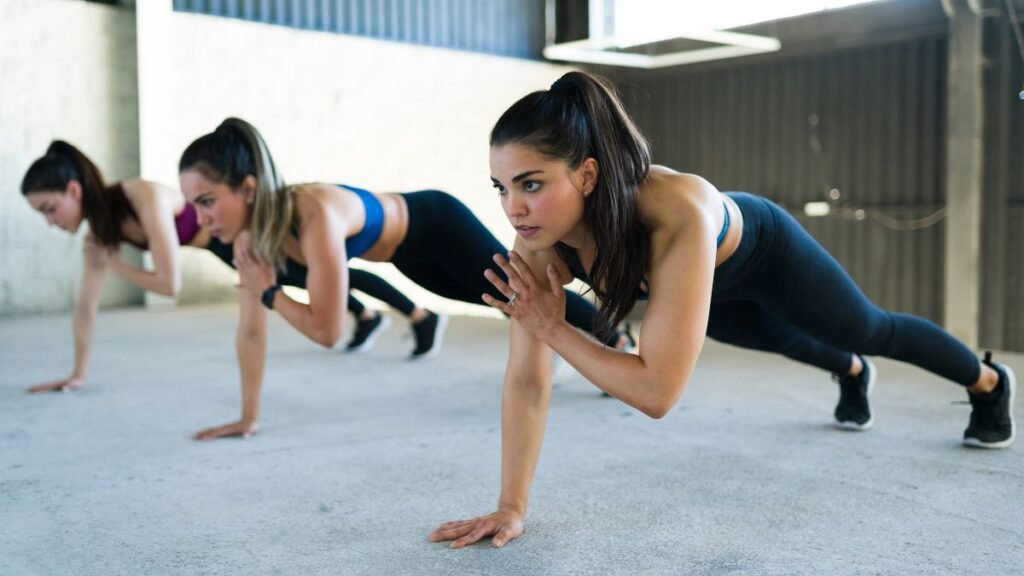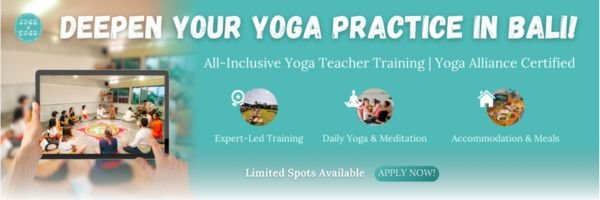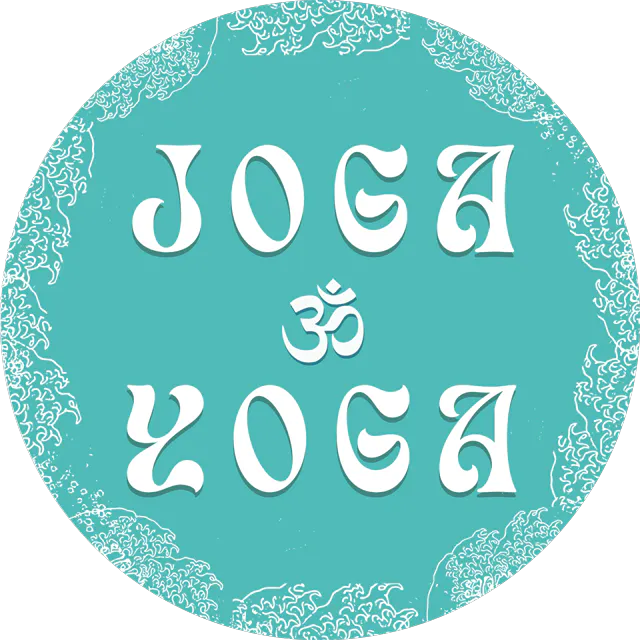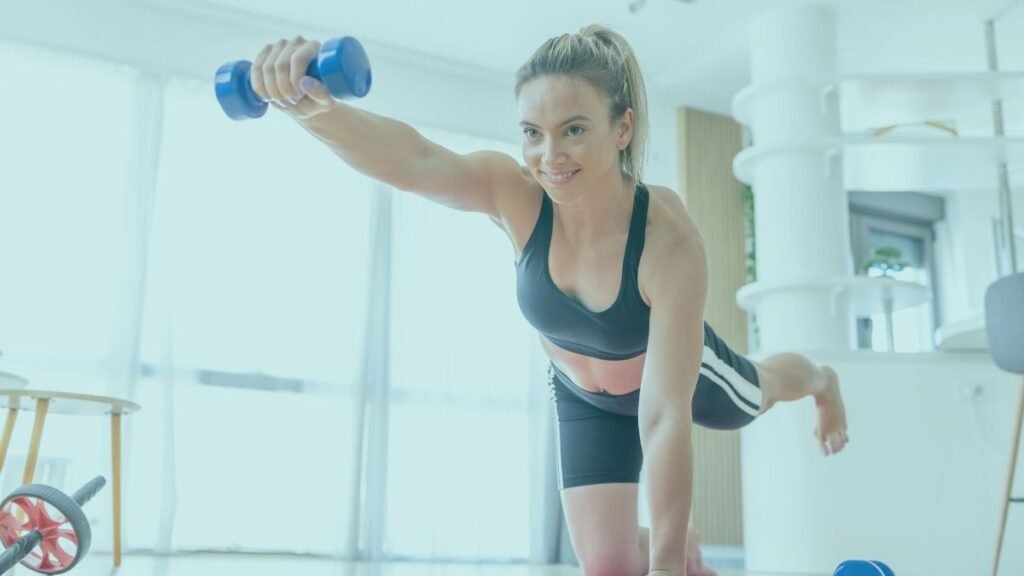Yoga Sculpt: When Vinyasa Gets a Six-Pack
Imagine flowing through a traditional yoga sequence, then suddenly picking up a pair of dumbbells, breaking into squats, lunges, and curls while the bass drops. Welcome to Yoga Sculpt, where mindful movement meets metabolic fire.
This high-intensity hybrid blends the mindfulness of vinyasa yoga with the strength-training and cardio benefits of modern fitness classes. Whether you’re looking to break a serious sweat, build lean muscle, or simply inject new energy into your practice, Yoga Sculpt offers a dynamic and increasingly popular path.

What Is Yoga Sculpt?
Yoga Sculpt is a hybrid workout combining vinyasa yoga, strength training, and cardio. Yoga Sculpt isn’t just a workout—it’s a fusion of flow and fire. Rooted in vinyasa yoga, it draws on the breath-linked movement of traditional sequences while integrating weights, cardio intervals, and high-intensity movements. It’s not about ditching the mat—it’s about redefining what the mat can do.
The concept of blending yoga with strength-based formats gained traction through the Power Yoga movement in the 1990s. Pioneered by teachers like Beryl Bender Birch, Power Yoga introduced a more athletic, accessible version of Ashtanga Yoga for Western audiences. This laid the foundation for Sculpt’s sweat-driven evolution.
CorePower Yoga’s Role in the Sculpt Surge
In 2004, CorePower Yoga—the largest yoga studio chain in the U.S.—launched Yoga Sculpt in response to member demand for a class that combined the mindfulness of yoga with the metabolic benefits of weight training and cardio. The format quickly became one of their most popular offerings, credited with bringing thousands of fitness-first practitioners into the world of yoga.
Their signature Sculpt class pairs Vinyasa-style flows with HIIT (High Intensity Interval Training) and strength blocks, all choreographed to music. The success of this model spurred similar programs at studios like Hot 8 Yoga, YogaSix, and Yoga Box.
How Yoga Sculpt Differs from Traditional Yoga
| Feature | Traditional Yoga | Yoga Sculpt |
| Focus | Breath + Asana | Strength + Conditioning |
| Props | Yoga mat | Dumbbells, resistance gear |
| Pace | Slow to moderate | Fast, rhythmic |
| Environment | Calm, meditative | High-energy, often heated |
| Outcome | Inner balance | Sweat, tone, endurance |
While traditional yoga focuses on internal awareness, pranayama, and subtle body energy, Yoga Sculpt shifts the spotlight to caloric burn, muscle activation, and cardiovascular endurance. It’s yoga-inspired—but unapologetically fitness-forward.
The Controversy: “Is It Still Yoga?”
Yoga Sculpt’s divergence from yogic tradition hasn’t gone unnoticed. Purists argue it commercializes and dilutes yoga’s spiritual essence, reducing ancient wisdom to sweat-soaked reps. Reddit debates even call it “an exercise class in disguise.”
Yet many practitioners—especially those coming from strength or athletic backgrounds—credit Yoga Sculpt as their gateway into deeper yogic practice. The structure, breath cues, and reflective cooldowns retain yogic integrity for some, even amid curls and cardio bursts.
Is Yoga Sculpt Really Yoga?
Yoga Sculpt has ignited passionate debate within the yoga community. On forums like Reddit, the skepticism is blunt:
“This is not yoga. Stop calling it yoga.”
The criticism runs deeper than aesthetics—it’s about philosophy. Traditional yoga, rooted in the Yoga Sutras of Patanjali, emphasizes breath control, internal stillness, and disciplined self-inquiry. In contrast, the amplified intensity of squats, curls, and high-energy playlists in a Sculpt class can seem, to some, like a departure from these core values.
Tradition vs. Transformation
Can yoga evolve and still be called yoga?
Traditional styles such as Hatha, Ashtanga, and Iyengar prioritize meditative awareness, precise alignment, and energetic discipline. Yoga Sculpt, by comparison, is externally focused—combining strength training, cardiovascular effort, and upbeat music. Yet it retains a yoga foundation through breath-linked movement, intentional transitions, and structured sequencing.
Power Yoga faced similar scrutiny in the 1990s. Its founder, Beryl Bender Birch, noted, “Power Yoga was something Americans could relate to… they knew they’d get a good workout.” The same accessibility now fuels the popularity of Sculpt.
What Instructors and Practitioners Say
Instructor perspectives range widely:
- Some praise Yoga Sculpt for bringing non-traditional students into yoga practice through fitness.
- Others warn that without anatomical knowledge, injury risks may increase.
- Students frequently report that Yoga Sculpt gave them a sustainable entry point into a regular yoga habit.
“I found yoga stillness in Sculpt’s savasana. It pulled me deeper into yoga than any traditional class ever did.” — CorePower student
Our Insight: The Practice Is in the Intention
Whether Yoga Sculpt qualifies as “real yoga” ultimately hinges on more than the presence of dumbbells.
- Intent: Are you moving with self-awareness, or simply exercising?
- Structure: Does the class preserve flow and breath integrity?
- Awareness: Is there attention to alignment, transitions, and the energetic state?
When practiced mindfully, Yoga Sculpt can be more than a workout. It can become a bridge between physical exertion and internal presence—a modern expression of the same yogic goal: union of body, breath, and awareness.

Core Elements of a Yoga Sculpt Class
Yoga Sculpt follows a structured, dynamic format that blends vinyasa sequencing with strength training and high-intensity intervals. Classes typically last between 45 and 60 minutes and are designed to build heat, endurance, and focus.
Typical Class Format
| Segment | Description |
| Integration | Grounding breathwork and supine stretches such as Happy Baby and Bridge Pose |
| Warm-Up | Sun Salutations A and B to activate breath and build internal heat |
| Strength Blocks | Dumbbell-based sets targeting arms, legs, and core (e.g., curls, squats, lunges, planks) |
| Cardio Burst | High-intensity intervals including jumping jacks, mountain climbers, squat jumps |
| Cool Down | Stretching and opening postures like Pigeon, seated twists, and reclined bound angles |
| Savasana | Restorative final relaxation to integrate movement and breath |
Sample 60-Minute Class Breakdown
- 0–5 minutes: Supine breathwork and gentle mobility
- 5–12 minutes: Sun Salutations (first round bodyweight, optional weights in second)
- 12–28 minutes: Weighted standing flow including Warrior transitions and lower body work
- 28–36 minutes: Upper body and core strengthening on mat or in static holds
- 36–42 minutes: High-intensity cardio sequence incorporating full-body movements
- 42–55 minutes: Grounded strength sets for glutes and abs, with cooldown stretches
- 55–60 minutes: Guided savasana with intentional breath and relaxation cues
Yoga Sculpt vs. Other Fitness Classes
Yoga Sculpt is often compared to several other popular modalities, but what truly sets it apart is its fusion of yogic movement, weight training, and cardiovascular intensity. Here’s how it stacks up against other formats:
| Feature | Yoga Sculpt | Vinyasa Yoga | HIIT | Pilates | Strength Training |
| Mindfulness | Yes | Yes | No | Yes | No |
| Cardio | Yes | Moderate | Yes | Light | Light |
| Use of Weights | Yes | No | Yes | No | Yes |
| Flexibility | Yes | Yes | No | Yes | No |
Key Takeaways:
- Yoga Sculpt combines the breathwork and flexibility of yoga, the resistance of strength training, and the intensity of cardio conditioning.
- Unlike HIIT or Strength Training, it incorporates structured flow, intention, and cool-down practices.
- Compared to Vinyasa, it adds load-bearing resistance to enhance muscle definition and metabolic output.
Benefits of Yoga Sculpt
Yoga Sculpt is more than just a hybrid workout—it delivers multifaceted benefits across physical, mental, and functional domains.
Physical Benefits
- Lean Muscle Development: Resistance-based movement with controlled range improves muscle tone without bulk.
- Calorie Burn: Each session can burn between 350–600+ calories, depending on intensity and duration.
- Postural Alignment: Sculpt improves core strength, which directly supports posture and spinal health.
Mental Benefits
- Endorphin Boost: The combination of cardio, strength, and rhythmic movement triggers mood-enhancing neurochemicals.
- Mindful Discipline: Sculpt challenges you to maintain yogic breathing and alignment under resistance, deepening mental focus.
- Accessible Flow State: For students new to meditation, the physical rigor paired with breath awareness can offer a gateway to presence.
Functional Benefits
- Balance and Coordination: Single-leg poses with weights, dynamic transitions, and varied tempos build proprioception and body control.
- Injury Prevention: Strengthening stabilizer muscles in a dynamic format reduces injury risk in both athletic and daily movements.
- Core Integration: Consistent core engagement supports joint stability and improves performance in other physical activities.
Is Yoga Sculpt a Good Workout?
Yoga Sculpt isn’t just another trendy fusion—it’s a scientifically sound, results-driven training method that aligns with modern exercise physiology. It combines aerobic intensity, strength training, and flexibility into a single class format.
Calorie Burn and Intensity
Studies and anecdotal data suggest Yoga Sculpt burns approximately 350–600+ calories per class, depending on:
- Bodyweight
- Effort level
- Heated vs. non-heated room
- Incorporated cardio segments
For comparison, that places it between a moderate-intensity spin class and a traditional HIIT workout, with added postural and mobility benefits.
How It Aligns with Exercise Science
Yoga Sculpt targets key physiological markers:
- Muscle overload: Reps with light to moderate weights induce hypertrophy (lean muscle gains)
- EPOC effect: Elevated post-exercise oxygen consumption keeps metabolism elevated post-class
- Stabilizer muscle recruitment: Functional, compound movement patterns improve joint support and movement economy
Pros and Cons for Different Fitness Goals
| Goal | Suitability | Notes |
| Muscle Building | Moderate | Great for endurance and toning; not ideal for hypertrophy-specific goals |
| Toning & Fat Loss | Excellent | High-rep circuits and cardio bursts increase lean definition |
| Weight Loss | High | Calorie burn + muscle retention = effective fat loss support |
| Mobility & Recovery | Moderate | Offers dynamic stretching but less passive recovery than Yin/Hatha |
| Beginner Fitness | Varies | Intensity can be scaled, but good form and core strength are essential |

FAQs & Community Questions
These are the most searched and discussed questions about Yoga Sculpt—ideal for both curious newcomers and experienced practitioners.
What is Yoga Sculpt?
Yoga Sculpt is a hybrid fitness format combining vinyasa-style yoga with strength training, cardio, and flexibility work. It uses light weights, bodyweight resistance, and dynamic sequences to build strength and endurance while maintaining yogic breath and flow.
Is Yoga Sculpt a Good Workout?
Yes. It provides full-body conditioning, cardiovascular challenge, and muscular endurance. It’s especially effective for individuals seeking an energetic, calorie-burning yoga experience with added resistance.
How Many Calories Does Yoga Sculpt Burn?
Typically between 350–600+ calories per 60-minute class, depending on individual exertion, weight used, and whether the room is heated.
Is Yoga Sculpt Safe for Beginners?
It can be safe if modifications are provided and students understand the basics of yoga alignment and proper weight usage. Beginners should start with lighter weights, prioritize breath awareness, and gradually increase intensity.
How Often Should You Do Yoga Sculpt?
2–4 times per week is ideal for balanced results. Pair it with traditional yoga, Pilates, or rest days for recovery and long-term gains.






